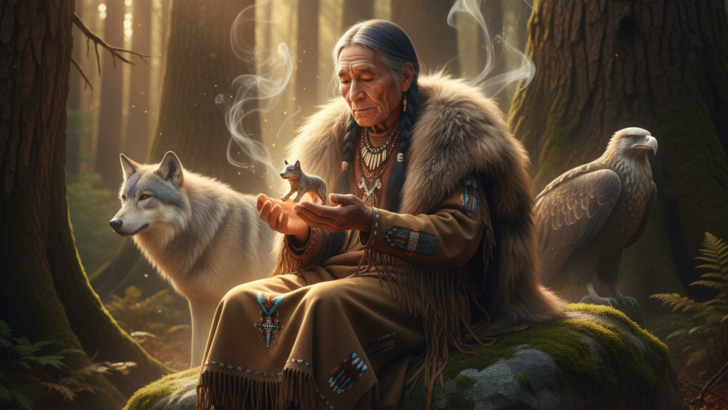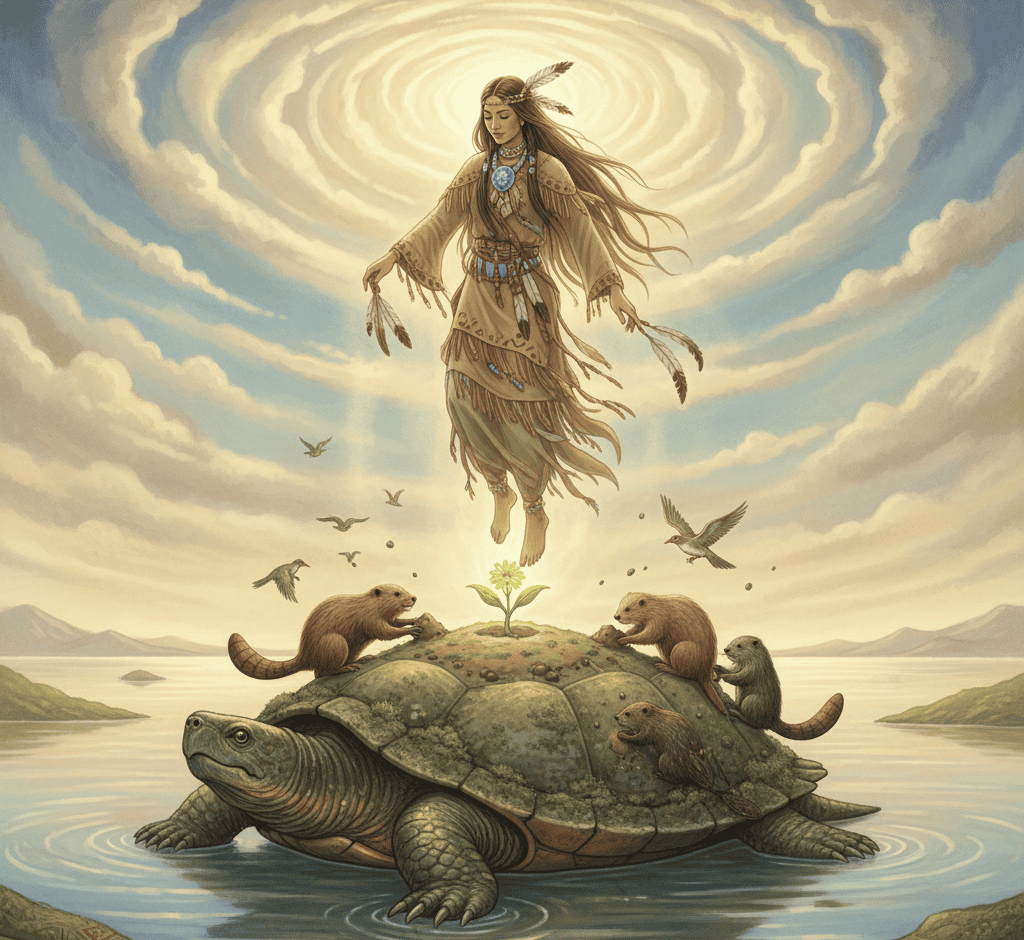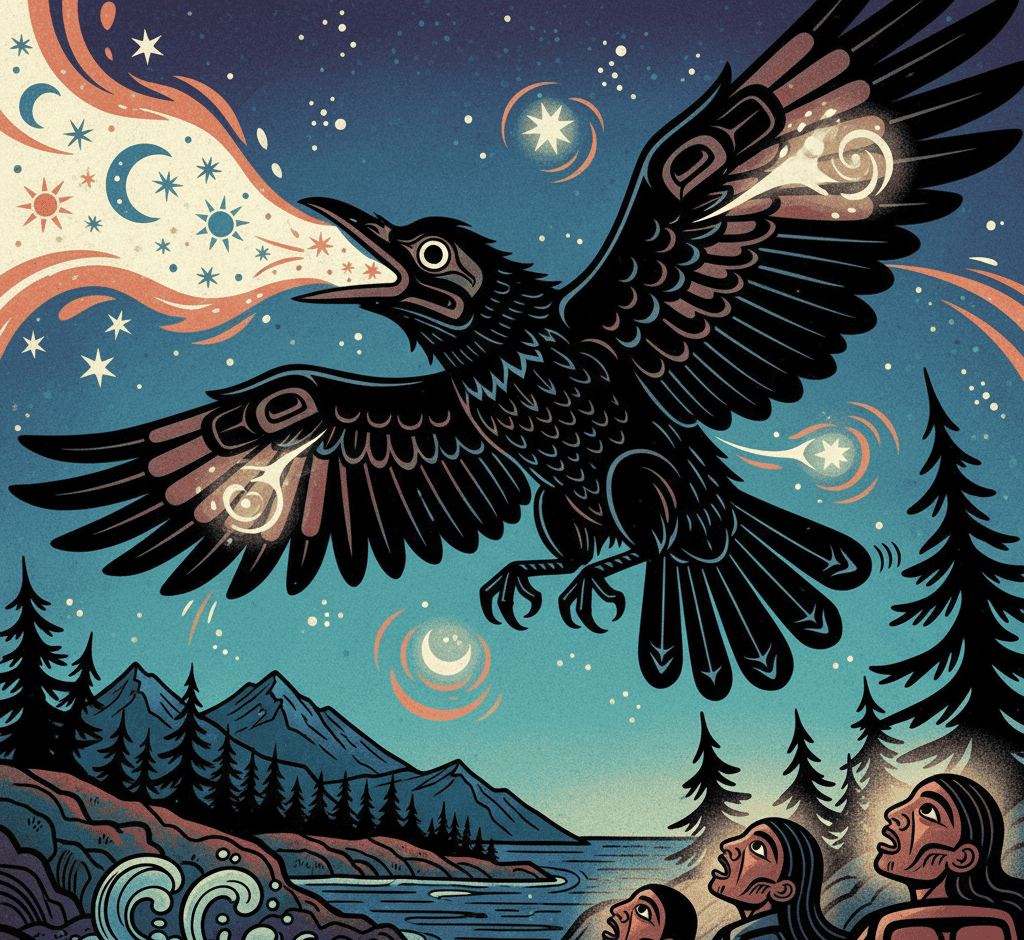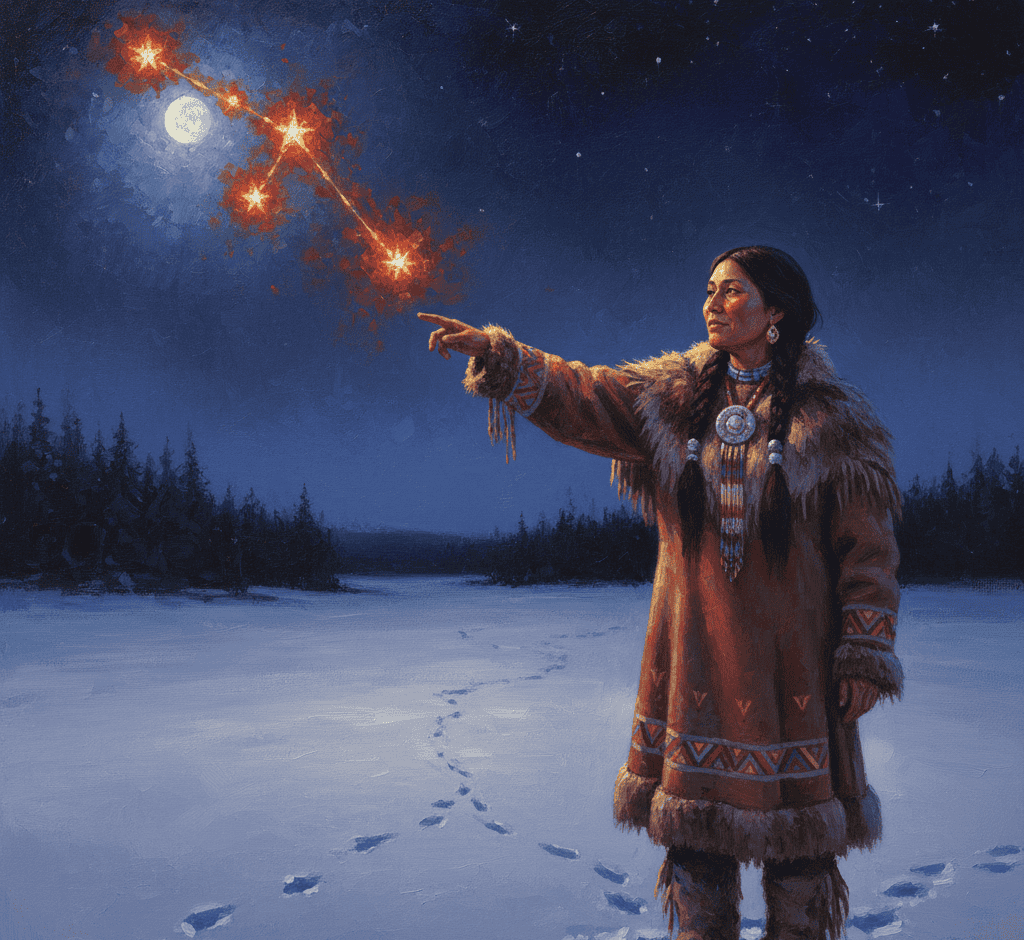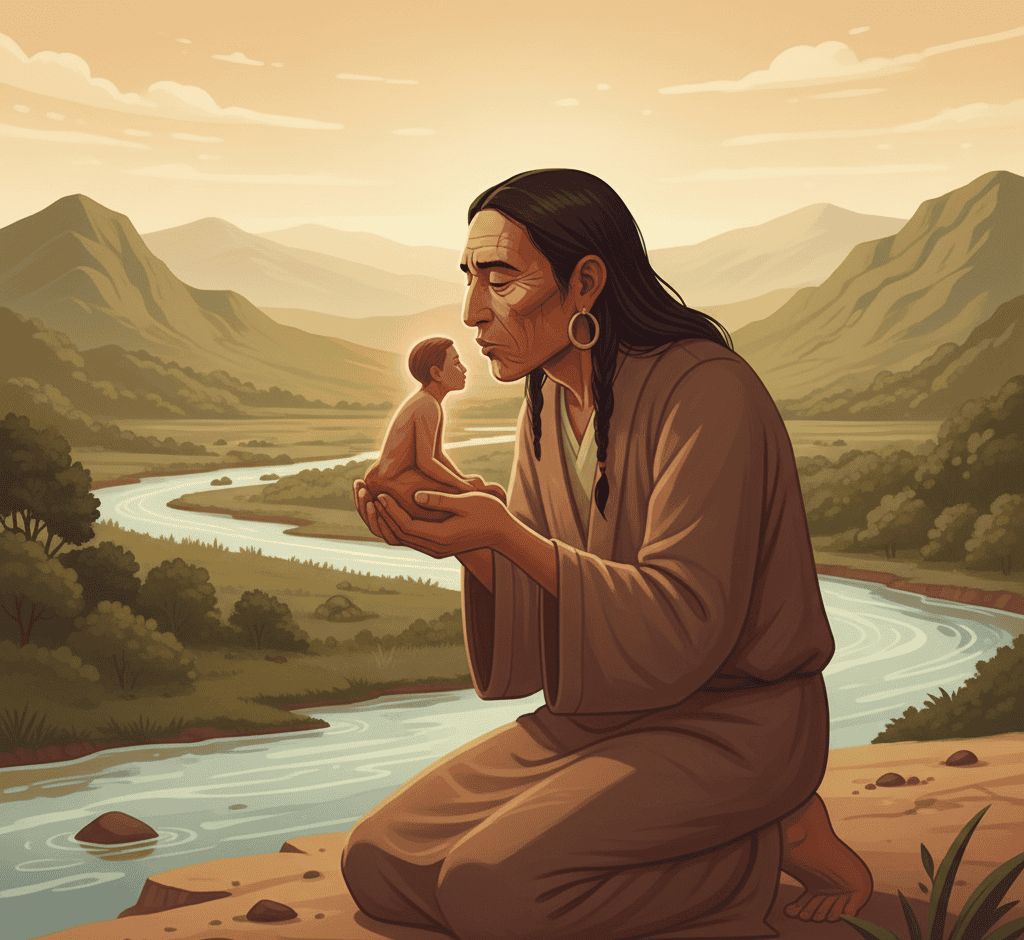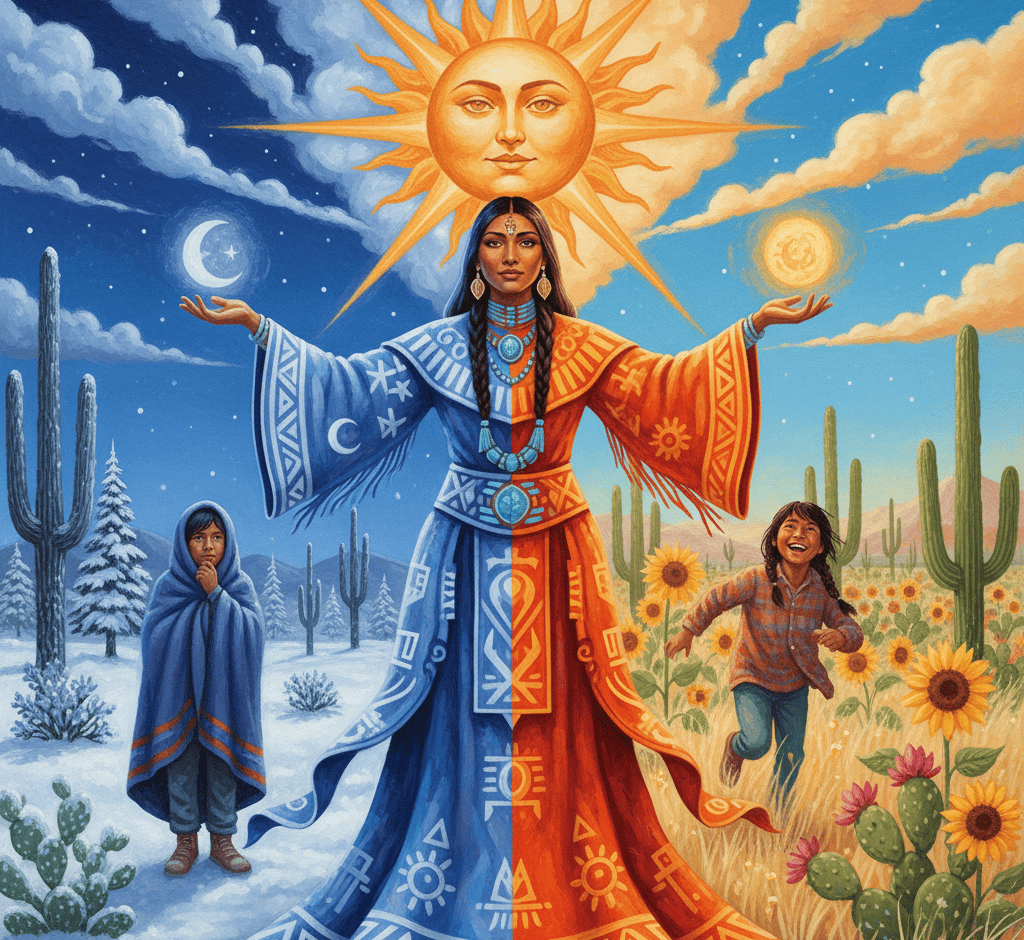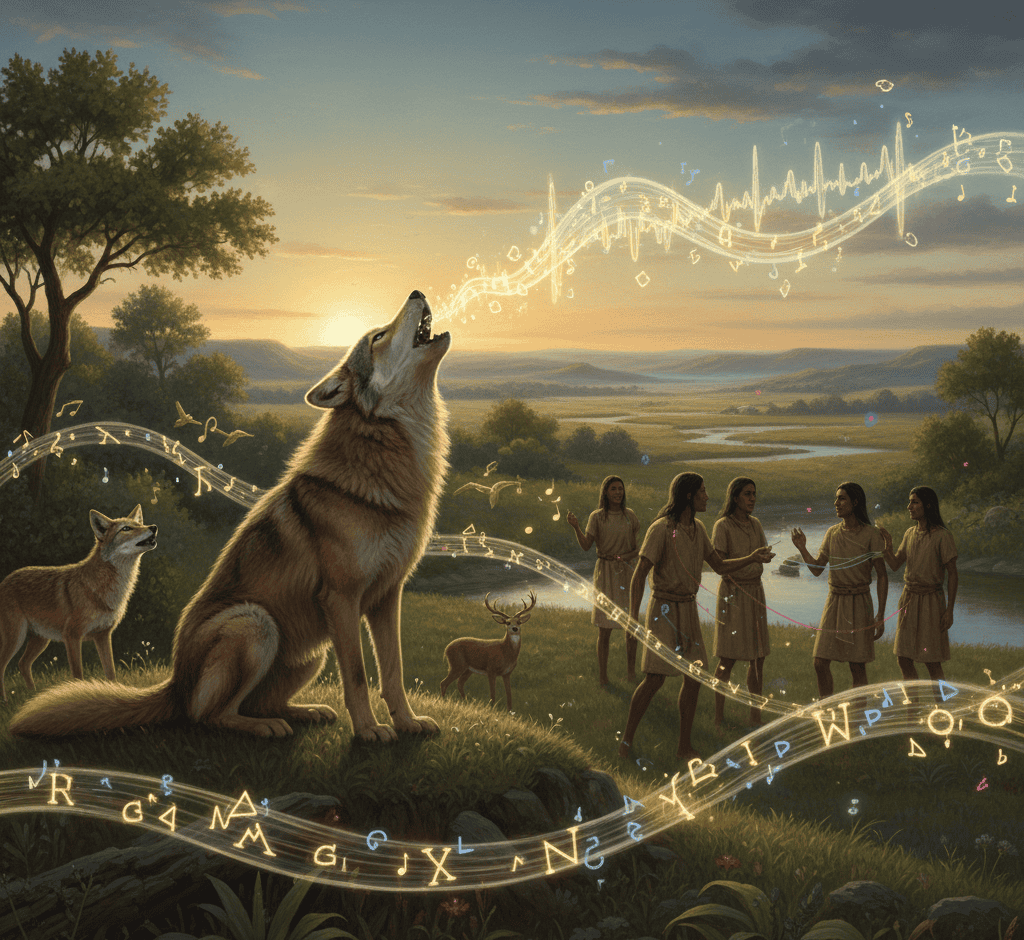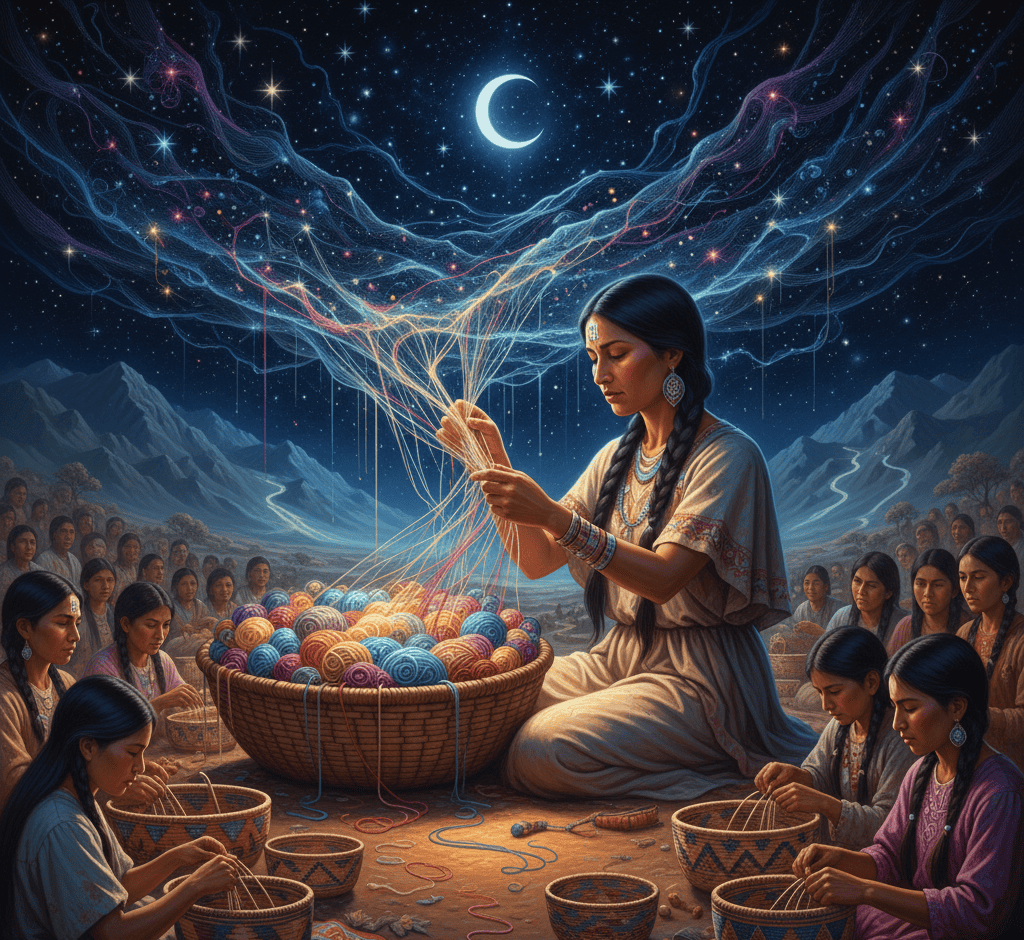The lands of North America are filled with stories that reach back to the beginnings of time.
Long before written histories, tribal storytellers passed down vivid creation tales that explain the sky, the animals, seasons, and the human role in the world.
Some of these myths have become well known, while others slipped into quiet corners of memory.
Here are seven forgotten or little retold creation myths from across the continent, told with respect and a sense of wonder.
Each one carries its own logic, humor, and a clear message about how people belong to the earth.
1. The Sky Woman and the Turtle Island
From the Haudenosaunee world comes the story of Sky Woman, who fell from a great place above the clouds.
As she tumbled toward a watery world, birds and beasts gathered to help. The muskrat made the deepest dive and brought up a small parcel of mud.
The animals worked together to place the mud on the back of a giant turtle. Sky Woman stepped upon that growing mound and danced her foot across the soft earth.
Wherever she stomped, plant life unfurled and rivers took shape. Her daughter taught the people how to plant corn, and from that first garden, humanity learned to live with the land.
The tale tells how cooperation between people and animals created the island that holds their homes. It is a story about gratitude and the idea that even the smallest helper can change the whole world.
2. The Raven’s Clever Light
On the northern Pacific coast, the Tlingit and neighboring peoples tell of Raven, who loved both mischief and beauty.
In the beginning, the world was cold and dark. Raven set out to steal the light from the keeper who hid it in chests.
He turned himself into a tiny creature and begged to be taken inside. Once he was there, he changed his shape, opened the chests, and released sunlight and stars.
But the clever part is how he did it with a joke and a song. The people watched the sky change and learned to mark the seasons.
Raven did not only bring light – he taught that curiosity and risk can bring life-changing gifts, but that cleverness must be tempered by care for what you take.
3. The Big Dipper Woman and the Gift of Fire
Among the Anishinaabe, there is a story about a woman who lived near the cold water. One night, she followed a strange light into the forest and found a trembling old man guarding a glowing ember.
He refused to share it because he feared it would burn everything. The woman begged and tended him with warm food and company until he finally relented.
She took the ember and carried it home, but on the way, a hungry bird snatched it and flew toward the sky.
The woman chased, and with a leap, she placed the ember into the Big Dipper, where it became a steady light travelers could follow.
Fire reached the people through her kindness and persistence. This tale explains both the origin of the hearth fire and how acts of care can create guides for whole communities.
4. The Old Man of Many Faces and the First People
The Plateau peoples tell of an old man who had the power to shape life. He wandered a blank land with only stones and wind.
One day, he took clay from the riverbanks and breathed into it a song. The clay rose as the first people. He gave each a gift, a skill, a name.
Some became hunters, others became caretakers of the rivers. The old man walked among them and sometimes disguised himself to test their hospitality.
Those who welcomed him received plentiful game and clear streams. Those who turned him away faced hardship.
The myth teaches that human society is formed not from grand decrees but from small choices about how we treat strangers.
5. The Woman of the Sun and the Seasons
In a southwestern story, a woman of great warmth married the Sun because she loved its light. She bore children who would control the seasons.
One child grew restless and wanted longer days for play. Another wanted cool nights to dream. When the woman argued with the Sun about her children, they negotiated and set a rhythm.
The child who loved play became the long days of summer, and the quiet child became the short nights of winter.
The people learned to follow that cycle and to celebrate each change with song and food.
The story frames seasons as the family life of gods and people, and suggests that balance is reached through conversation, not command.
6. The Wolf and the Creation of Language
From some Plains traditions comes a softer creation tale about Wolf, who walked alone in the early world. Everything was silent, and people could not understand one another.
Wolf howled and listened as the breeze replied and the river answered. He began to mimic the world around him and to mix sounds into words.
The other animals laughed and then copied him. Wolves, birds, and coyotes gave pieces of speech, and humans learned to name things with meaning.
This myth explains the gift of language as a shared invention inspired by the whole living world. It celebrates communication as a skill everyone builds together and warns that speech must honor listeners more than boast.
7. The Woman Who Stitched the Sky
A quieter tale comes from the Southwest, where a woman named Spider or Spider Woman is both weaver and mother.
In the empty first days, she sat with a basket of threads and began to stitch a vast canopy above the earth. Each thread was a star, and each knot marked a mountain and a river.
As she worked, she sang, and the world came alive beneath her loom. People learned to weave their own baskets and to tell stories through patterns that echoed the sky.
Spider taught that creation is a careful craft and that art binds people to place. She remains a reminder that the world is a fabric of living relationships that we must tend.

Siempre sentí una fuerte conexión con lo Divino desde mi nacimiento. Como autora y mentora, mi misión es ayudar a los demás a encontrar el amor, la felicidad y la fuerza interior en los momentos más oscuros.

